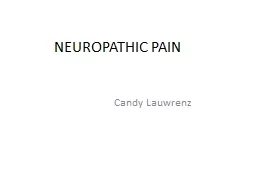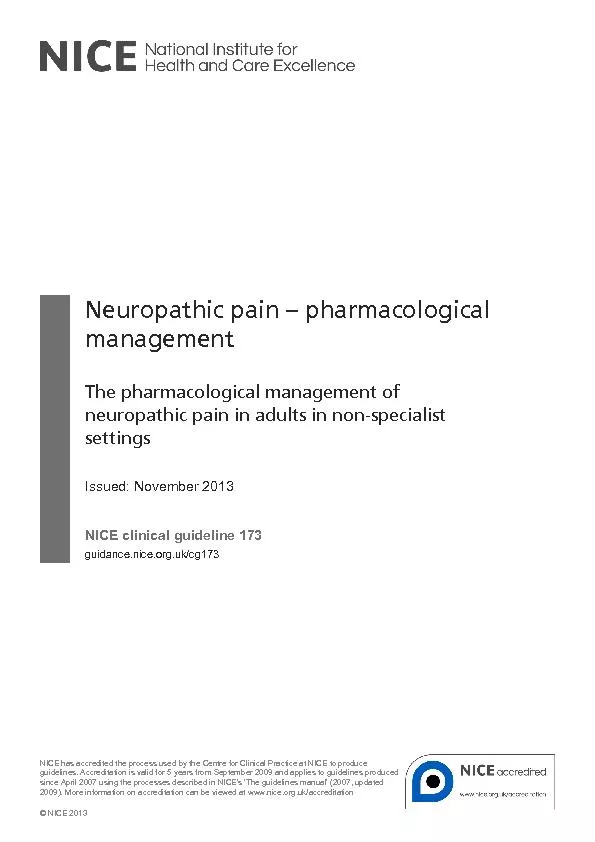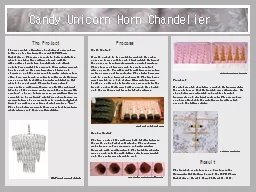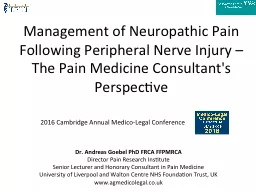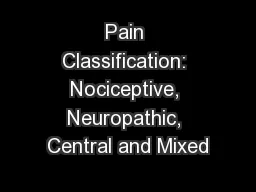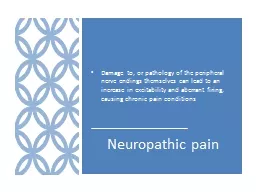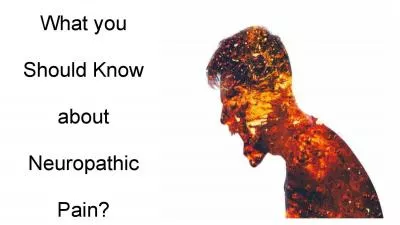PPT-NEUROPATHIC PAIN Candy Lauwrenz
Author : olivia-moreira | Published Date : 2018-11-10
Definisi nyeri International Association for the Study of Pain IASP Nyeri adalah pengalaman sensorik dan emosional yang tidak menyenangkan akibat kerusakan
Presentation Embed Code
Download Presentation
Download Presentation The PPT/PDF document "NEUROPATHIC PAIN Candy Lauwrenz" is the property of its rightful owner. Permission is granted to download and print the materials on this website for personal, non-commercial use only, and to display it on your personal computer provided you do not modify the materials and that you retain all copyright notices contained in the materials. By downloading content from our website, you accept the terms of this agreement.
NEUROPATHIC PAIN Candy Lauwrenz: Transcript
Download Rules Of Document
"NEUROPATHIC PAIN Candy Lauwrenz"The content belongs to its owner. You may download and print it for personal use, without modification, and keep all copyright notices. By downloading, you agree to these terms.
Related Documents

